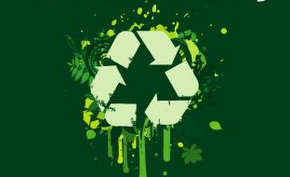
“Carbonated paper” (it really was not fizzy) was invented in 1806, when Englishman Ralph Wedgwood patented his “Stylographic Writer.” Pellegrino Turri invented a typewriting machine in Italy in 1808, and since “black paper” was essential for the operation of his machine, he perfected his form of inked paper contemporaneously with Wedgwood. Wedgwood extended the idea into a method of making copies of private or business letters. The writer wrote with a metal stylus on a sheet of paper thin enough to be transparent, using one of the carbon sheets to obtain a black copy on another sheet of paper placed underneath. The retained copy was in reverse on the underside of the transparent top sheet, but since the paper was very thin (like tissue paper) it could be read from the other side where it appeared correct.
In 1823 Cyrus Dakin of Concord, Massachusetts, was making carbon paper similar to Wedgwood, and selling it to the Associated Press. In 1870 the AP was covering the balloon ascent of Lebbeus H. Rogers, a promotional stunt in Cincinnati for a firm in which Rogers had just been made a partner. During an interview in the newspaper offices after the flight, Rogers saw Dakin’s carbon paper and also saw its commercial potential for copying office documents. L.H. Rogers & Co. was founded in New York and made its first major sale to the U.S. War Department. In 1872 the typewriter helped Rogers hit the big time.
Carbon paper was made by hand—a mixture of carbon black (a pigment) and oil in naphtha (a solvent) was applied to sheets of paper using a wide brush. Rogers’ company developed the first carbon-coating machine, and introduced the use of hot wax applied by rollers. Rogers went on to produce the first typewriter ribbons (long thin strips of carbon paper). Although the photocopier probably struck the biggest blow to carbon paper and other methods of copying. NCR (No Carbon Required paper) was developed by National Cash Register in 1954. This process relied on the pressure of a pen or typewriter to induce a chemical reaction between different coatings on adjacent sheets of paper. The original was produced by the pen or typewriter, while the chemical reaction left a blue image on subsequent pages. It was used for forms.
The “cc” in the corner box of your e-mail originally meant “carbon copy,” not “courtesy copy.” When a letter was to be typed with a “carbon,” a paper sandwich was created of three layers. On top was a sheet of typing paper; next a sheet of carbon paper with the carbon side down, on the bottom was a sheet of lightweight paper called onionskin. Many a novice typist put the carbon paper in emulsion up and got a perfect copy—on the back of the original letter.
Frank Romano is professor emeritus at the Rochest Institute of Technology.
Comment below to have your say on this story.
If you have a news story or tip-off, get in touch at editorial@sprinter.com.au.
Sign up to the Sprinter newsletter

